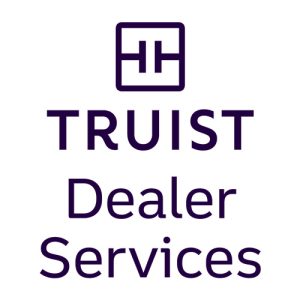It can take years — or generations — to build a thriving auto retailing enterprise. The complexities can make a smooth transition to the next generation challenging, but addressing key concerns and problem-prone areas today will make the transition easier down the road. Getting started early on structuring can help ensure a more seamless transfer and the continued success of your business.
No One-Size-Fits-All Approaches
A business transition ideally occurs when the right conditions align in 1) the market, 2) the business and 3) timing for the owner. In the real world, dealers must balance these elements, making tradeoffs based on what’s possible and how flexible they’re willing to be on payout and timing. A long runway allows you to better coordinate the timing and address other potentially thorny issues to ensure a smooth and rewarding exit. While every dealership is different, certain shared characteristics make transitions particularly tricky:- Multi-layer structures. Auto retail businesses often have several value drivers, such as real estate, new and used car sales, parts and service revenues, and F&I profit participation funds, among others. Many long-established businesses have real estate and business investments throughout the community.
- Multi-generational and minority operating partner involvement. Dealerships often have immediate and extended family, along with operating partners with minority ownership stakes, in various roles, from active dealership management to passive ownership.
- Hardworking owners. Owners who’ve invested years into building a business look forward to enjoying an active, well-funded retirement. In our experience, car dealers are among the most passionate about staying in the business for the long term.
- Tax concerns. Dealer businesses and estates need to be properly structured to minimize tax liabilities and preserve wealth.
- OEM relationships. The OEM, with its operational and investment requirements, functions as another “partner” in the business. Involving the OEM in the succession planning process can help maintain a strong relationship post-transition.
Avoid These 7 Common Transition Pitfalls
- Suboptimal Business Structure
Structure the business and its assets efficiently — this is of key importance in maximizing wealth transfer, as well as stabilizing the business through any transition. Though your immediate focus may be on day-to-day operations, your business grows increasingly complex as you add dealerships, real estate corporations, reinsurance corporations and, perhaps, a management or holding company. Save time and expense in accomplishing your estate goals by getting guidance from a trust and estate planning attorney early in the lifecycle of your business. A well-designed business structure not only provides significant tax benefits but also lays a solid foundation for effective, ongoing management and governance of all the entities that make up your business. If the business is intended to pass generationally, you can also minimize or even eliminate any estate tax burden that may be placed on the business and, therefore, better secure the continued success in the next generation. - Untimely Tax Planning
It’s impossible to overemphasize the importance of conducting early estate planning long before you exit the business — it’s the most important tactic for achieving tax-efficient wealth transfer. If the business’ valuation is significant, then planning for adequate liquidity when the estate passes is a primary concern. Starting a transition without a plan in place means fewer opportunities to minimize your tax exposure, including:- Leveraging the estate tax exemption.
- Putting valuation discounts in place.
- Considering trust structures to meet your estate planning goals.
- Passing wealth, through gifting, to lower the taxable estate value.
- Last-Minute Gifting
Another tax-saving strategy is to gift while you’re still operating the business. Waiting until the last minute may reduce the likelihood of achieving the best transfer outcomes for you and your family. To create a plan that fits your age, where you are in the business lifecycle and the level of involvement you want going forward, ask:- What are your motivations and goals around transition?
- What income do you need to maintain your desired lifestyle?
- What other assets and income streams do you have?
- Contentious Family Dynamics
Transition planning forces leaders to make tough choices that may lead to dissent among family members. It may be tempting to let it unfold once you’ve stepped aside, but it’s best to address these issues upfront for the sake of your family and your business.
Strong emotions, old resentments and challenging personal relationships can complicate planning and transition. These situations often present themselves in blended families, when there are longstanding rifts within a family and when some children are engaged in the business while others are not.
Bypass sentiment and think objectively about who is best qualified to assume leadership of the family enterprise. It may be best to determine now whether business ownership can be shared with all family members or if ownership needs to be held within a smaller subset of the family to provide the best chance of continued success. If an owner’s primary goal is continued family harmony, then a decision may need to be made to transition the business prior to the owner’s passing if issues resulting from complicated family dynamics cannot be resolved. With solid reasoning behind your choices, you’ll be better prepared for those potentially uncomfortable conversations.
- Psychological Resistance
Dealers sometimes hesitate to start transition planning, slowed by conscious or unconscious concerns regarding:- Uncertainty about what legacy they wish to leave.
- Discussions of their own passing.
- Loss of identity (“the business is who I am”).
- Loss of the leadership role in the family.
- Loss of the primary income stream.
- Loss of control.
- Delays in Seeking OEM Approval
Getting OEM approval needs to be part of your exit planning process. As dealer groups become more complex, the OEMs typically want to see more documentation and have a say in the plans of the business. While it’s not likely to pose a problem, OEMs are more curious about the details of dealers’ succession plans than they once were. Here again, timing is paramount. Start the process early to make sure the OEM is on board with your plans. They may request that you structure the succession plan with a ramp-up period to get comfortable with the successor you’ve chosen. - The Worst-Case Scenario: No Transition Plan
To prevent chaos in the event of an untimely death, even young owners need a succession plan. Not having one could create a daunting tax liability for your family and threaten the continuity of the business.
A well-constructed plan will address existing contractual and shareholder agreements to build a path for successors without any financial fallout for the business. That includes addressing the inheritance split if one child never worked a day in your dealership and the other has devoted their life to it. You want to make sure your family won’t be forced to sell at fire sale prices and will be able to continue with minimal conflict or lingering feelings of inequity.
To achieve the best outcomes for everyone involved, prepare for the unexpected by getting a plan in place and continuing to refine it.
Special thanks to Stacey Prince-Troutman, partner and chair of the Trusts and Estates Practice at Akerman LLP, for her contribution to this article. To learn how Stacey and her firm can help your dealership, she can be contacted at stacey.prince-troutman@akerman.com.
Truist Bank, Member FDIC. ©2024 Truist Financial Corporation. Truist, the Truist logo and Truist Purple are service marks of Truist Financial Corporation. Equal Housing Lender.









